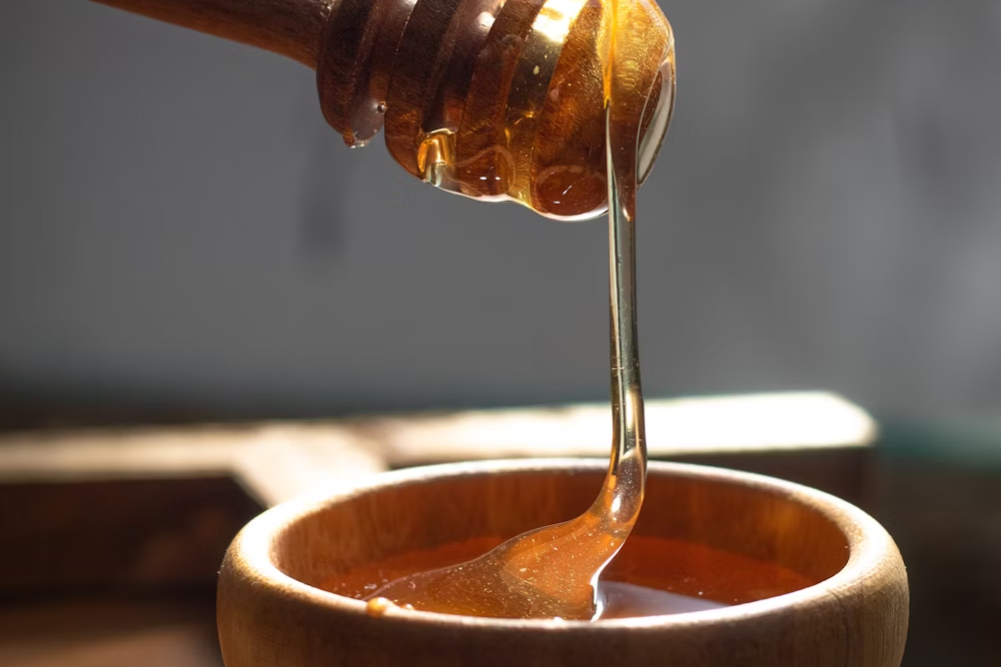Could aquaponics and hydroponics be the future of food?
I am always surprised by the size of the produce that spills out of hydroponics or aquaponics systems: trees of basil, vast sheafs of silverbeet, rocket leaves the size of your palm. It always looks vibrant and healthy, like an over-extroverted and enthusiastic cousin. And not an inch of soil in sight.
These two methods of food production have been gaining ground both commercially and on a domestic scale as people explore innovative ways to meet greater fluctuations in our climate and dwindling soil and water resources and, for a host of environmental and economic reasons, the need to grow food closer to where we eat it.
Clean hands
There are many historical precursors for this type of cultivation: Egyptian, Chinese, Indian and Mexican cultures have all grown food in “floating gardens”. Where arable land was minimal, these gardens provided a much-needed, abundant food supply and there are many that still do today.
In 1492, Leonardo da Vinci noted that plants need certain mineral elements to grow and this observation inspired curious amateurs and scientists alike over the next 500 years to evolve a system of production based on water, the right mineral nutrients and light.
Many people are curious about the nutrients used in hydroponics systems and there's a number of different products on the market.
In 1929, Professor William Frederick Gericke of the University of California at Berkeley created a sensation with his 25-foot tomatoes grown in mineral-nutrient solution rather than soil. Modern hydroponics had arrived and has now spread worldwide, from Israel to Armenia, North Korea to the Caribbean, with Canada now second only to Holland in hydroponic food production.
During the Second World War, hydroponically grown food was used to feed soldiers in the South Pacific. At Wake Island, a rocky atoll in the Pacific used as a refuelling stop for Pan American Airlines in the 1930s, hydroponic vegetables were grown for passengers, as once again soil was poor and it was prohibitively expensive to air-lift fresh produce.
The benefits
While many gardeners who enjoy getting their hands dirty may find the technical infrastructure of either hydroponics or aquaponics systems offputting, the benefits far outweigh any concerns, including:
- Faster growth rate, crop maturity and yields
- Consistency and quality of crops
- Drastically reduced water and nutrients compared with soil-grown produce
- Crops can be grown in places where ordinary horticulture is impossible due to poor or contaminated soil
- Reduced growing area required
- Systems can be set up at a comfortable working height, excellent for people who are elderly or have disabilities
- Relative freedom from soil diseases and pests
- Weeds are virtually non-existent
- Water stress is reduced in hot conditions
- Less ongoing maintenance required
- Great for rental properties, as all the infrastructure can be moved
The systems
Hydroponics derives from the Greek hydro (water) and ponos (labour). The term has come to refer to growing plants using mineral nutrient solutions without soil. There are two different forms of hydroponic production: growing terrestrial plants directly into the mineral solution (solution culture) or into an inert medium such as perlite, gravel, rock wool, LECA (light expanded clay aggregate) and even broken bricks or old polar fleece jumpers (medium culture). There are numerous hydroponics production methods, developed to suit different contexts. These include:
- Aeroponics systems: Plant roots are grown suspended in the air, and nutrient is fed to the plant roots via small, fine-spray sprinklers.
- Flood and drain system: Plants are flooded with an aerated nutrient solution, which then drains to provide much-needed aeration and oxygen to the roots.
- Hand-fed systems: Plants in an inert medium are hand-fed with nutrient solution.
- Nutrient film technique (NFT) systems: Plant roots are able to access a constantly running and very shallow “film†(stream) of nutrient solution flowing through an enclosed trough.
- Dripper system: A central reservoir of nutrient solution is pumped up to the drippers, which feed solution into pots with medium and plants. The grower needs to determine how often the plants are flooded so they’re not overwatered.
- Autopot system: Individual plants in individual containers dictate when they get their nutrient solution rather than being on an automated cycle. This system is great for different-sized plants (seedlings to mature plants) or different types of plants with different water/nutrient needs.
To find out more about hydroponics, I visited Jim Fah at his Gardensmart shop in Braeside, Melbourne.
Not surprisingly, despite the early winter weather, Jim was still producing tomatoes and his cucumbers and melons were just nearing the end of their season. Jim has an agricultural and aquatic science background, as well as a highly pragmatic and down-to-earth approach to both hydroponics and aquaponics systems. Aside from hydroponics supplies, he also has a number of aquaponics tanks filled with a range of fish species and even freshwater prawns.
Jim is the inventor of the smart valve, a device that underpins his very successful Autopot hydroponics systems. He has set up commercial Autopot hydroponics systems in Asia, Mauritius, the Maldives and Paraguay, but is also very supportive of the backyard grower; his simple system works on both small and larger scales. The idea for the Autopot system came to Jim when he needed to find a solution to keep his houseplants watered while away on long trips.
Creating the mechanical smart valve allowed his plants to uptake water and nutrients as needed; when the pot runs dry, the valve releases a set amount of water and nutrient, and this cycle runs continuously from a tank. The pot system is both lightweight and flexible and requires little growing space. Pots can be arranged on the ground or vertically to run up a wall. You can grow a 40-foot tomato in a five-litre pot and, likewise, grow fruit trees in larger 30-50-litre pots.
Maintenance and ongoing running costs are minimal: roughly $100 covers electricity, water and fish food for a small system annually. Once
Nutrients and water are fed to plants via gravity for smaller systems, or using a small pump, which is triggered by the smart valve, making it an extremely efficient way to circulate the water and nutrients over short or long distances. Up to 1000 plants over a distance of 40km can be fed by a small pump with this type of system. The pump is battery operated, which means it can also be charged by wind or solar energy, and there are no complex electronics that are susceptible to breakdown. You can get started with these systems for between $100 and $500 and can add more pots as your enthusiasm dictates.
Many people are curious about the nutrients used in hydroponics systems and there’s a number of different products on the market. The nutrients are more accurately described as minerals and differ from conventional fertilisers in that they are 100 per cent soluble. Similar to conventional fertilisers, however, major components include nitrogen, potassium, phosphorus, calcium and magnesium, with minor quantities of iron, manganese, copper, boron, molybdenum and zinc.
The nutrients generally come in two separate parts as they become chemically active when mixed together, but can be mixed in a diluted form. Due to the specific balance of these nutrients, it’s best to follow the specifications rather than mix your own, unless you have the required experience or knowledge. This accounts for the phenomenal growth of hydroponic plants, as they are constantly fed a well-balanced diet.
One downside of hydroponics is that, although some of the nutrients are derived from organic materials such as earthworm castings, blood meal, fish meal, kelp or guano, most nutrient formulas are not, strictly speaking, organic. It’s very difficult to create your own balanced mix with completely organic nutrients. With aquaponics, however, it’s a different story provided you use organic fish food (see below).
Troubleshooting
Pests and disease can build up, especially in a greenhouse. The best form of treatment is to keep up good plant hygiene (removing dead and diseased material quickly), use passive controls such as sticky insect traps, ensure good ventilation and, only then, if you still have a problem, use environmentally friendly sprays. As with any garden pests and diseases, the sooner the intervention the better.
Just add water and fish
Aquaponics is a wonderful system that produces both plants and fish in a symbiotic relationship with mutual benefits. Essentially, it’s a combination of hydroponic production and aquaculture, where plants grown in a hydroponic bed are fed with nutrients produced by the fish, thereby obviating the need for external nutrient inputs. The only additional inputs required on a consistent basis are fish feed and water to top up the system.
Of course, aquaponics systems also produce fish for your dinner table as well as armfuls of vegetables and herbs.
Joel Malcolm of Backyard Aquaponics in Western Australia has really stimulated aquaponic growing in Australia. His simple systems, articles and web-based Forums have increased the uptake of aquaponics.
At CERES (Centre for Education and Research into Environmental Strategies) in East Brunswick, Melbourne, an aquaponics system has been designed and built by environmental designer Stephen Mushin with key assistance from Wilson Lennard of Aquaponic Solutions, RMIT students and CERES volunteers as both a demonstration and research site.
I also met with Dean Cant of Growfresh Aquaponics in Lower Plenty, Melbourne, who had a great small system set up in his courtyard and supplies and installs both domestic and commercial systems.
The key components of all aquaponics systems are fish in a tank, growing beds filled with media such as LECA (lightweight expanded clay aggregate) or gravel, a pump to recirculate the water and the associated plumbing. These components can be custom-built or put together from a variety of recycled materials. Many growers like the LECA clay balls because they are inert and therefore pH neutral. Importantly, they are soft on your hands, which makes a significant difference when you are handling a number of plants regularly.
A greenhouse is optional and many systems in temperate Australia still operate well in cooler weather, supplying winter and all-year crops and greens. It depends on what you want to grow, when.
Go fishing
One of the most common fish to be cultured in aquaponics systems is the silver perch (Bidyanus bidyanus) native to the reaches of the upper Murray Darling. These fish are a favourite choice for aquaponics systems because of their hardiness, food-to-protein conversion rate and, importantly, their reputation as a good eating fish.
Maintaining consistent water temperature and pH is important. A neutral pH of 7 is desirable, and garden lime can be added periodically to raise the pH. While the silver perch can survive temperatures that drop to 0ï‚°, they stop eating at around 16ï‚°, so expect slower growth over the cooler months. This will affect nutrient circulation and the overall efficiency and production capacity of the system.
Other fish species such as trout do well over the winter months and, in temperature-managed systems, fish such as barramundi, Murray cod, sleepy cod (aptly named for their incredibly docile habit), jade perch and golden perch are also options. If you’re not interested in eating your fish but enjoying their company and the nutrients they produce, goldfish are also suitable.
The size of your system depends on your needs, interest and budget.
Aquaponics systems operate on a flood-and-drain cycle, whereby water from the fish tank is circulated to growing beds every 30-45 minutes for 15 minutes. This system of water and nutrient circulation minimises energy requirements and prolongs the life of your pump. The media within the bed act as both a bio-filter and medium for the beneficial bacteria that convert the fish waste into valuable plant fertiliser. The fish produce nitrogen in the form of ammonia and via the bio-filter this gets transformed into nitrates, which are a soluble form of nitrogen. This process of filtering and feeding makes valuable nutrients available to the plants and at the same time oxygenates and cleans the water for the fish.
The size of your system depends on your needs, interest and budget. The simplest is a small tank and grow bed, which can be added to as needed. A 1000L fish tank and 1m × 2m grow bed can produce up to 15kg of fish (the equivalent of 30 table-size fish) in a year and intensive food crops that yield more quickly and more abundantly due to the ongoing availability of water and nutrients.
Where hydroponics systems work according to specific nutrient and watering regimes, aquaponics systems, because of their symbiotic nature, need to balance the number of fish, maturity of the bacteria within the bio-filter and the number of plants and their nutrient requirements. The relatively closed loop operation and balanced nutrients inherent in an aquaponics system (as opposed to the external nutrient inputs of hydroponics systems) make aquaponics more appealing to many people with strong ethical and environmental considerations.
Maintenance and ongoing running costs are minimal: roughly $100 covers electricity, water and fish food for a small system annually. Once you have invested in the set-up, it lasts indefinitely, with the pump being the only thing that will need replacement.
And what about the taste? Many hydroponics and aquaponics growers assert that their produce tastes as good as, if not better than the soil-grown equivalent. Like any fruit or vegetable, they are best eaten when ripe, and direct from the plant. Why not try it and see for yourself?
Further resources
- Jim Fah, Autopo
- Backyard Aquaponics
- Wilson Lennard, Aquaponic Solutions
- Dean Cant, Growfresh Aquaponics
- Practical Aquaponics for Everyone
- CERES
There are many hydroponics and aquaponics suppliers across Australia. You can find them via your local Yellow Pages or the internet. CERES runs courses on aquaponics for people wishing to set up their own backyard system.








